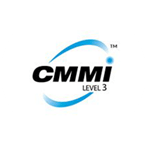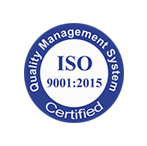The market for augmented reality software was worth USD 2.13 billion in 2016 and is predicted to increase to USD 35.22 billion by 2022, with a CAGR of 57.36 per cent over the forecast period. The study’s base year is 2016, and it has been predicted in the period between 2017 and 2022. The market is being driven by the adoption of AR software in consumer, commercial, medical, and business applications. One of the primary aspects driving this industry is the rising interest of huge tech businesses in augmented reality technologies. Smartphones have been identified as the most potential future device on the market. Consumers have begun to accept this Human-Computer Interface (HCI) as the use of smartphones and AR browsers has grown more research interest recently.
By considering the market analysis there is a SWOT analysis done on Augmented reality mentioned below:
Strengths
- In the medical field, there is a growing demand for AR-based software applications for 3D visualization.
- Large tech businesses are becoming increasingly interested in augmented reality.
- In the e-commerce and retail industries, there is a growing need for augmented reality.
Weakness
- AR apps’ navigation performance is hampered by a limited user interface (UI).
- Processing power is limited, and storage capacity is inadequate.
- The reliance on technical achievements on a computer and digital network advancements
Opportunities
- Investments in augmented reality (AR) are increasing.
- Increased use of augmented reality in the tourism industry
- In the automotive and industrial industries, there are numerous opportunities.
Threats
- Due to privacy concerns and design complexities, the adoption rate is low.
- Application reconfiguration for various platforms
Where is AR Training Used?
Many businesses have realized that AR technology can be used for more than simply games in the decade or so that it has been around, and those who want to take advantage of its potential have designed immersive apps for their business. Let’s look at some of the most innovative augmented reality training examples from various industries:
- Manufacturing: Product developers, executives, and employees can collaborate using augmented reality to ensure that any manufacturing process flaws or quality issues are identified before the product reaches the consumer. Product developers can use augmented reality to create 3-D models of new items and introduce them to the production line.
- Construction: AR is the merging of digital 3D models with real-world building sites in design, engineering, and construction. AR is a communication tool that can boost efficiency by bringing together design and construction teams in a shared virtual world.
- Automobile: With the use of a headset or a smartphone camera, salesmen may demonstrate automotive functions in showrooms using augmented reality in automobile software. The system enables the viewing of a large amount of overlapping data, including interior and external elements, performance, weight, and finance.
- Healthcare: By integrating the virtual and physical worlds, more life sciences businesses are utilizing augmented reality (AR) to bring innovative therapies to life. AR can assist in the creation of rich, interactive experiences that demonstrate how new medications and medical technologies interact with the human body. Brand teams and content suppliers may use this revolutionary technology to give their field force a better method to engage healthcare practitioners.
- Education: In the education sector, it gives you a more interactive, appealing and qualitative experience by having images, video, and content. By adopting augmented reality in education, tech learning and teaching can be improved to many advanced levels like old teaching and reading skills can be changed. In augmented reality, old tactics of teaching can be overcome and developed into something more innovative for learning
How does AR training work?
As you may be aware, augmented reality works by taking real-world footage (through the camera) and reproducing it on screen, but with digital items, people, and models added. As a result, the graphics on the screen evoke a hybrid universe in which physical and digital models coexist.
For example, a forklift training app may instruct the user to kneel down and point their device camera downwards, resulting in a screen that displays virtual pedals next to their feet and driving controls above their knees.
Given the availability of smartphones with front-facing cameras and the scarcity of alternative lightweight devices that fulfil this requirement, AR in learning and development is now centred upon mobile devices. Nonetheless, several companies are attempting to break into the market with smart glasses, some of top AR company in India are currently on the market, and others are on the way.
What are Some Augmented Reality Training Benefits?
An enterprise could use augmented reality to improve training efficiency or to completely replace existing programs. If you opt to apply it at your firm, you should see immediate benefits and great outcomes that will benefit not only the people who are being trained but also your company. Some instances are as follows:
Benefits for business
- Improved employee engagement and information retention
- Complex topics and concepts are simplified
- Reduced expenses as a result of the solution’s universality
- There is no need for specific equipment or teachers because the logistics are simple.
- The scope of the application can easily be expanded to include different positions.
- In a matter of hours, updates can be implemented automatically.
Benefits for employees
- Information is easier to comprehend
- learning may be done at any time and in any location
- Learning with augmented reality happens at a different pace for each person.
- There are no threats to your safety
- There is no external pressure or stress
Final Thoughts
Our lives are made easier by augmented reality. It can also be used in practically any industry. Whether in the education, healthcare, entertainment, manufacturing, or oil and gas sectors, AR provides some good developments and plays a significant role in driving growth and income. The global AR market is estimated to increase at a CAGR of 43.8 percent, reaching USD 340.16 billion by 2028, according to Grand View Research.














